Log in
Search
Latest topics
» Cox films/videos...by Coxfledgling Today at 4:46 am
» Purchased the last of any bult engines from Ken Enya
by Coxfledgling Today at 4:18 am
» My N-1R build log
by roddie Today at 12:32 am
» Happy 77th birthday Andrew!
by akjgardner Today at 12:27 am
» TEE DEE Having issues
by TD ABUSER Yesterday at 9:43 pm
» Landing-gear tips
by roddie Yesterday at 6:17 pm
» Roger Harris revisited
by TD ABUSER Yesterday at 2:13 pm
» Tee Dee .020 combat model
by Ken Cook Yesterday at 1:41 pm
» Retail price mark-up.. how much is enough?
by Ken Cook Yesterday at 1:37 pm
» My latest doodle...
by roddie Yesterday at 10:43 am
» Chocolate chip cookie dough.........
by roddie Fri Nov 22, 2024 1:13 pm
» Free Flight Radio Assist
by rdw777 Fri Nov 22, 2024 9:24 am
Cox Engine of The Month
Class I Cox Vintage Speed secrets...
Page 1 of 1
 Class I Cox Vintage Speed secrets...
Class I Cox Vintage Speed secrets...
There's been enough interest I think to warrant a few photos of my winning (Super) Cox Babe Bee engine.
Lets start with the tank. All Cox integral tanks do not run evenly stable. For ALL sport work they run well enough. But for high speed (high G- Force) speed flying, the run instability shows up quite noticeably. Most noticeable is the rich to lean run throughout the run. Exacerbated even more by opening up the venturi beyond normal limits giving weak fuel draw. I first saw a "proper" uniflow tank modified by Master Modeller John McCollum. Not only was it uniflow, it also had a homemade spring loaded overflow valve on top. His engines always ran superior to the field...and were quick to re-fuel for fast pitstops.
I overlooked this mod for some 15 years as I (due to fear, laziness, etc.) preferred to run "stock" & see how far I could go... My mouse racer tanks are still stock today.
However, I had the opportunity to "play" with my British Class I Vintage Speed motor. Since quick re-fueling is not an issue I finally broke down & went to see what I could do. First & foremost, the hard tube fuel pick up tube MUST be located on the absolute most outboard part of the tank. It turns out the metal back plates all have a lovely 'fence' that keeps the end of the pick up tube perfectly in place.
Next a hard tube 3/32" O.D. alum tube is bent to shape and glued in place for a uniflow vent. This uniflow vent tube end ends up being just on top of the pick up tube inside the tank. I do not know if the uniflow tubing diameter can be smaller, but I strongly suspect yes. I would prefer to place tank tubes absolutely exactly where I want, but it seems not to be too critical where the uniflow tube is as long as it's fairly close to the pick up. I'll try to show my tank in the photos below. If this is of any interest to you fellows, I'll go into more detail on some of the other details of my 'Super Babe Bee'. Cheers, Paul
1.
2.
3.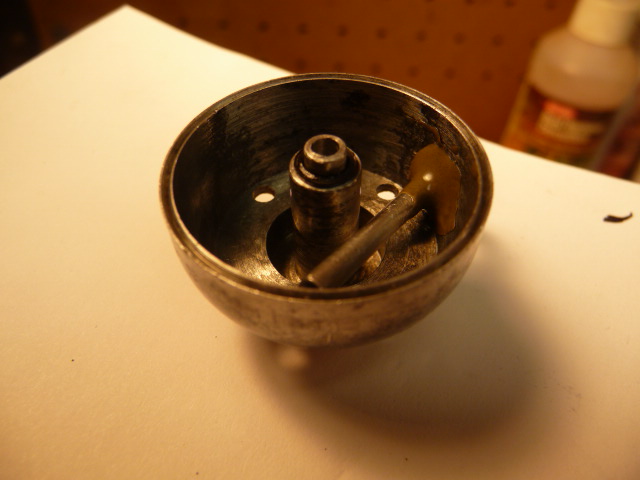
4.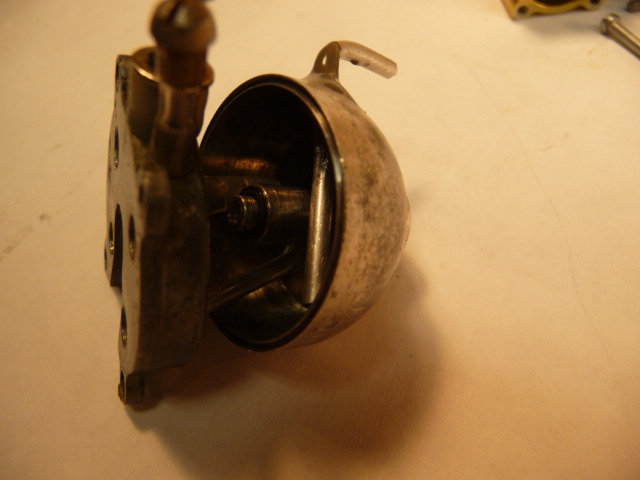
5.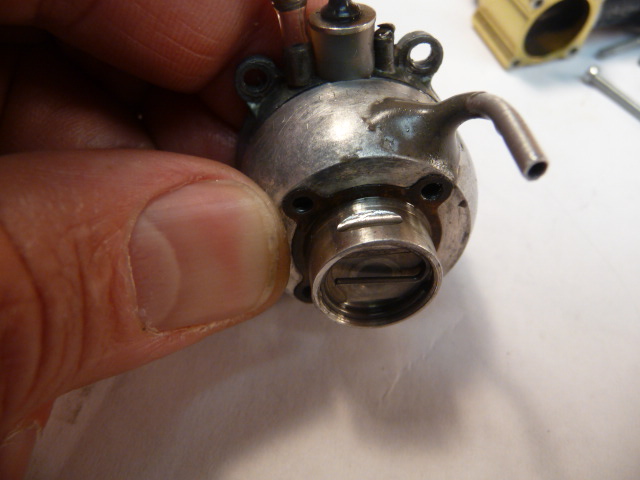
Lets start with the tank. All Cox integral tanks do not run evenly stable. For ALL sport work they run well enough. But for high speed (high G- Force) speed flying, the run instability shows up quite noticeably. Most noticeable is the rich to lean run throughout the run. Exacerbated even more by opening up the venturi beyond normal limits giving weak fuel draw. I first saw a "proper" uniflow tank modified by Master Modeller John McCollum. Not only was it uniflow, it also had a homemade spring loaded overflow valve on top. His engines always ran superior to the field...and were quick to re-fuel for fast pitstops.
I overlooked this mod for some 15 years as I (due to fear, laziness, etc.) preferred to run "stock" & see how far I could go... My mouse racer tanks are still stock today.
However, I had the opportunity to "play" with my British Class I Vintage Speed motor. Since quick re-fueling is not an issue I finally broke down & went to see what I could do. First & foremost, the hard tube fuel pick up tube MUST be located on the absolute most outboard part of the tank. It turns out the metal back plates all have a lovely 'fence' that keeps the end of the pick up tube perfectly in place.
Next a hard tube 3/32" O.D. alum tube is bent to shape and glued in place for a uniflow vent. This uniflow vent tube end ends up being just on top of the pick up tube inside the tank. I do not know if the uniflow tubing diameter can be smaller, but I strongly suspect yes. I would prefer to place tank tubes absolutely exactly where I want, but it seems not to be too critical where the uniflow tube is as long as it's fairly close to the pick up. I'll try to show my tank in the photos below. If this is of any interest to you fellows, I'll go into more detail on some of the other details of my 'Super Babe Bee'. Cheers, Paul
1.

2.

3.

4.

5.


Paulgibeault- Gold Member

- Posts : 259
Join date : 2011-09-24
Location : Leduc, Alberta Canada
 Re: Class I Cox Vintage Speed secrets...
Re: Class I Cox Vintage Speed secrets...
Hi Paul
Thank you for sharing this with us. We all greatly appreciate this info from you.
It is very interesting to see what you have done and how you get such great results.
It is impressive what you have done with the tank.
I would love to see all the rest of the changes and secrets you have done to your "Super Babe Bee".
Please share as much as you can. Maybe I can use some of these ideas on my Reed speed plane's Babe bee.
Theo
Thank you for sharing this with us. We all greatly appreciate this info from you.
It is very interesting to see what you have done and how you get such great results.
It is impressive what you have done with the tank.
I would love to see all the rest of the changes and secrets you have done to your "Super Babe Bee".
Please share as much as you can. Maybe I can use some of these ideas on my Reed speed plane's Babe bee.
Theo

Theo Kleynhans- Gold Member

- Posts : 196
Join date : 2013-12-30
Age : 43
Location : South Africa
 Re: Class I Cox Vintage Speed secrets...
Re: Class I Cox Vintage Speed secrets...
I have a small stack of baby bee tanks I could experiment on. This is interesting if you are willing to share.
Phil
Phil

pkrankow- Top Poster

- Posts : 3025
Join date : 2012-10-02
Location : Ohio
 Re: Class I Cox Vintage Speed secrets...
Re: Class I Cox Vintage Speed secrets...
Yes! Please continue !!!!!!!!!!

Kim- Top Poster




Posts : 8625
Join date : 2011-09-06
Location : South East Missouri
 Re: Class I Cox Vintage Speed secrets...
Re: Class I Cox Vintage Speed secrets...
What type of glue are you using? Looks like JB weld. I haven't had any luck with JB and Nitro.
Ron
Ron

Cribbs74- Moderator



Posts : 11907
Join date : 2011-10-24
Age : 50
Location : Tuttle, OK
 Re: Class I Cox Vintage Speed secrets...
Re: Class I Cox Vintage Speed secrets...
That looks like Devcon to me. We used it in the engine room for emergency repairs when I was sailing.
http://www.itw-devcon.co.uk/index.php?/devcon_mro/epoxy_maintenance_repair_and_overhaul_systems/devcon_plastic_steel_putty_a/
http://www.itw-devcon.co.uk/index.php?/devcon_mro/epoxy_maintenance_repair_and_overhaul_systems/devcon_plastic_steel_putty_a/

OVERLORD- Diamond Member

- Posts : 1807
Join date : 2013-03-19
Age : 58
Location : Normandy, France
 Re: Class I Cox Vintage Speed secrets...
Re: Class I Cox Vintage Speed secrets...
Yes I am also interested Paul , Thanks for sharing you secrets !! Eric 

getback- Top Poster



Posts : 10442
Join date : 2013-01-18
Age : 67
Location : julian , NC
 Re: Class I Cox Vintage Speed secrets...
Re: Class I Cox Vintage Speed secrets...
Hi Paul.. Yes.. Thank You! Definitely COOL! I like the clean bends in your hard-tubes. Do you use something to support the inside of the tube(s) while bending? I have a set of the K & S "spring-coil type" (external) benders.. but for such a short length tube, I'm not sure how well they'd work.. or how tight a radius could be formed.
 Re: Class I Cox Vintage Speed secrets...
Re: Class I Cox Vintage Speed secrets...
Hi Ron,
Five minute J-B Weld failed initially, but the current vent appears to be holding (so far) using 24 hr. J-B Weld Epoxy glue...
Five minute J-B Weld failed initially, but the current vent appears to be holding (so far) using 24 hr. J-B Weld Epoxy glue...
Cribbs74 wrote:What type of glue are you using? Looks like JB weld. I haven't had any luck with JB and Nitro. Ron

Paulgibeault- Gold Member

- Posts : 259
Join date : 2011-09-24
Location : Leduc, Alberta Canada
 Re: Class I Cox Vintage Speed secrets...
Re: Class I Cox Vintage Speed secrets...
Hi Roger,
I use the fine Harry Higley tool to do all my bends using (soft) K&S tubing as shown in photos.


-
I use the fine Harry Higley tool to do all my bends using (soft) K&S tubing as shown in photos.


-

roddie wrote:Hi Paul.. Yes.. Thank You! Definitely COOL! I like the clean bends in your hard-tubes.

Paulgibeault- Gold Member

- Posts : 259
Join date : 2011-09-24
Location : Leduc, Alberta Canada
 Vintage Class I Speed 'Super Bee' Engine. cont'd
Vintage Class I Speed 'Super Bee' Engine. cont'd
OK guys, thanks for the kind words. Here is a bit more info on the making of my "Super Babe Bee".
Regarding the tank bowl, if you are using the G-Clip type reed retainer, it is wise to file or Dremel grind a small 'relief' at the top. This is done because some pistons (especially when loose in the ball-socket joint), will hammer away at the tank. This creates shed metal particles & worse slows down the engine. A relief here, ends the problem.
1.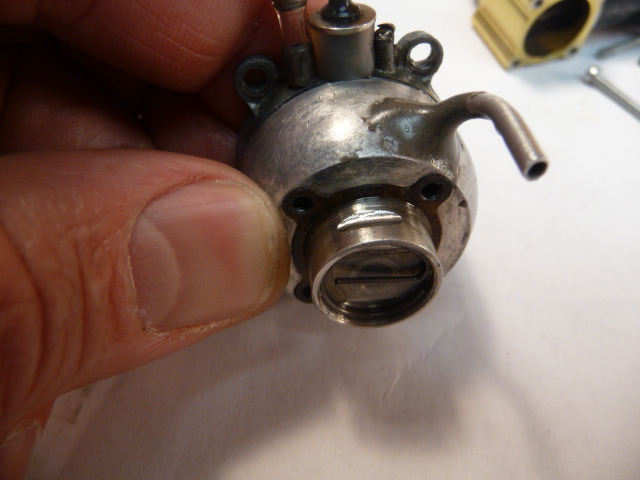
2. With the previously described uniflow tank venting, I was able to drill out the tank venturi & backplate to .093". This size usually causes erratic running with the stock tank. I sneak up on the size using one size smaller drill bit so that the final cut is only a few thou. I'm hoping the final hole bore finish will be smoother than with just a single drill bit bored hole.
-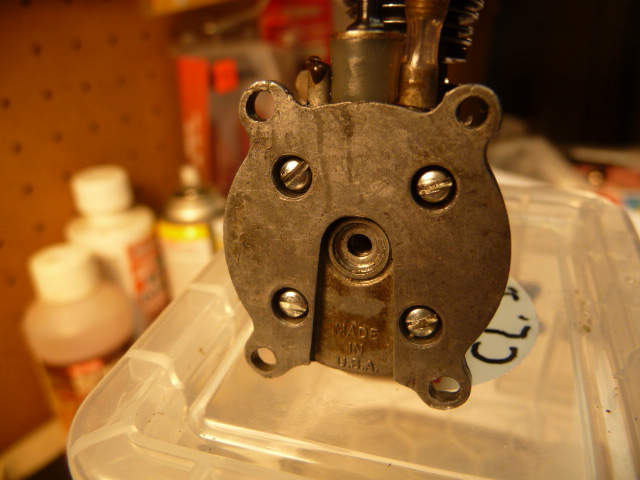
3. Of course I prefer a hard anodized crankcase coupled with a Killer Bee crank. Although I use a true turning 'after-market' spinner, but the 'Original' Cox vintage spinner is your best bet in that department, for a smooth running high speed spinner. Some after-market spinners wobble a bit at high RPM, so keep an eye out for that.
-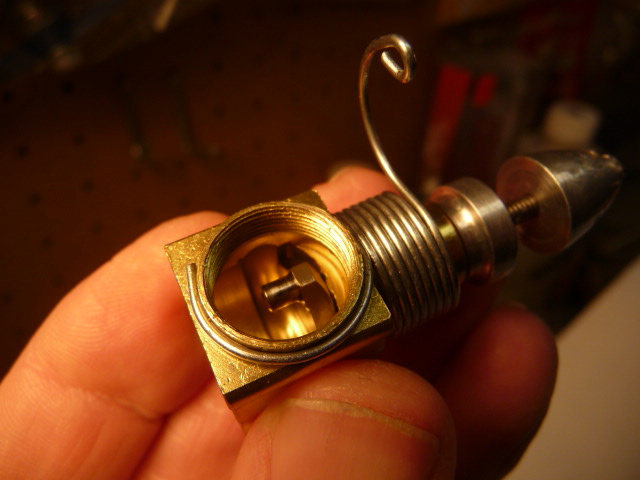
4. Of course, I will NEVER recommend grinding away in the cylinder ports, I will concede that the grinding shown here has not slowed anything down...
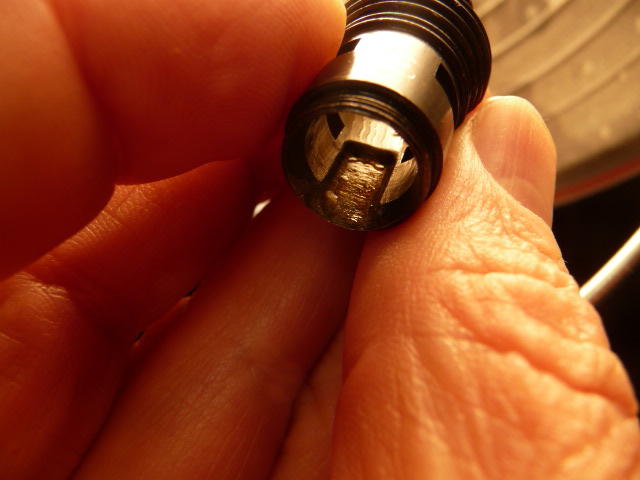
5. This particular engine seems to run very well with only two (.005) head shims. Since it's a speed engine rather than a racing engine, the occasional blown plug is acceptable. I would have like to have tried the Nelson/Galbreath head except that it may not be allowed under the "Vintage Class" rules, especially when the original Cox plugs are easily available.
-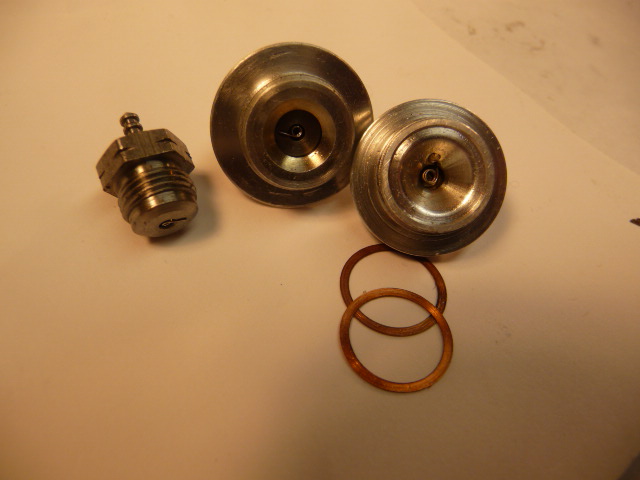
6. Most people don't realize that a speed model is only as good as its PROP! I started out with an APC 4.5D X 4P prop. I'm thinking that I need more pitch & so have modified a number of other higher pitched props. At this level, with nobody to compare notes with, it's all a matter of cut & try. Flight testing is something I do not have the luxury to do. So, we'll see how they work out at the next contest!
-
This British Class I Vintage Speed project has been FUN! Other than props, I didn't have to really buy anything new & it certainly doesn't break the bank. I hope you find this of some interest & value.
Cheers, Paul a.k.a. Mr. Mouse
Regarding the tank bowl, if you are using the G-Clip type reed retainer, it is wise to file or Dremel grind a small 'relief' at the top. This is done because some pistons (especially when loose in the ball-socket joint), will hammer away at the tank. This creates shed metal particles & worse slows down the engine. A relief here, ends the problem.
1.

2. With the previously described uniflow tank venting, I was able to drill out the tank venturi & backplate to .093". This size usually causes erratic running with the stock tank. I sneak up on the size using one size smaller drill bit so that the final cut is only a few thou. I'm hoping the final hole bore finish will be smoother than with just a single drill bit bored hole.
-

3. Of course I prefer a hard anodized crankcase coupled with a Killer Bee crank. Although I use a true turning 'after-market' spinner, but the 'Original' Cox vintage spinner is your best bet in that department, for a smooth running high speed spinner. Some after-market spinners wobble a bit at high RPM, so keep an eye out for that.
-

4. Of course, I will NEVER recommend grinding away in the cylinder ports, I will concede that the grinding shown here has not slowed anything down...

5. This particular engine seems to run very well with only two (.005) head shims. Since it's a speed engine rather than a racing engine, the occasional blown plug is acceptable. I would have like to have tried the Nelson/Galbreath head except that it may not be allowed under the "Vintage Class" rules, especially when the original Cox plugs are easily available.
-

6. Most people don't realize that a speed model is only as good as its PROP! I started out with an APC 4.5D X 4P prop. I'm thinking that I need more pitch & so have modified a number of other higher pitched props. At this level, with nobody to compare notes with, it's all a matter of cut & try. Flight testing is something I do not have the luxury to do. So, we'll see how they work out at the next contest!
-

This British Class I Vintage Speed project has been FUN! Other than props, I didn't have to really buy anything new & it certainly doesn't break the bank. I hope you find this of some interest & value.
Cheers, Paul a.k.a. Mr. Mouse
Last edited by Paulgibeault on Wed Nov 05, 2014 5:05 pm; edited 1 time in total (Reason for editing : added info)

Paulgibeault- Gold Member

- Posts : 259
Join date : 2011-09-24
Location : Leduc, Alberta Canada
 Re: Class I Cox Vintage Speed secrets...
Re: Class I Cox Vintage Speed secrets...
Superb post Paul.
I have used the high strength J&B weld for several years on many different small and large engines. With proper prep (scratched up and thoroughly de-greased) I never have had a failure of the stuff.
One question...looks like the metal tank back plate could be hogged out some; removing flash, nubs, and such to increase the total volume of fuel.
Is this prohibited or not desirable for your speed engines?
I have used the high strength J&B weld for several years on many different small and large engines. With proper prep (scratched up and thoroughly de-greased) I never have had a failure of the stuff.
One question...looks like the metal tank back plate could be hogged out some; removing flash, nubs, and such to increase the total volume of fuel.
Is this prohibited or not desirable for your speed engines?
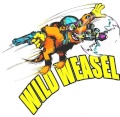
fredvon4- Top Poster


Posts : 4012
Join date : 2011-08-26
Age : 69
Location : Lampasas Texas
 Vintage Class I Speed 'Super Bee' Engine. cont'd
Vintage Class I Speed 'Super Bee' Engine. cont'd
Hi Fred,
Thanks for the kind words. Removing the tanks inside flashing, nubs, etc. is useful for AMA Class I Mouse race, to increase range. I heard it could be worth another 2 laps, but can't substantiate that claim as I don't do it. I have managed to get in 33+ laps with the 8cc tank in AMA mouse race, if things are set right. With a wrong setting I'm often short on range & therefore such a mod could help. Initially, I was marginal in getting enough laps with the standard 4cc Babe Bee tank. I suspected perhaps due to fuel siphoning in flight. This appears to be true, as the uniflow tank now has lots of range even at a higher speed. When I mean lots, maybe that's a mis-nomer. I need to take off then get 12 timed laps on 35' lines for Vintage Speed. No problem at all now. Racing nor speed have any restrictions on modifications to the tank.
Cheers, Paul
Thanks for the kind words. Removing the tanks inside flashing, nubs, etc. is useful for AMA Class I Mouse race, to increase range. I heard it could be worth another 2 laps, but can't substantiate that claim as I don't do it. I have managed to get in 33+ laps with the 8cc tank in AMA mouse race, if things are set right. With a wrong setting I'm often short on range & therefore such a mod could help. Initially, I was marginal in getting enough laps with the standard 4cc Babe Bee tank. I suspected perhaps due to fuel siphoning in flight. This appears to be true, as the uniflow tank now has lots of range even at a higher speed. When I mean lots, maybe that's a mis-nomer. I need to take off then get 12 timed laps on 35' lines for Vintage Speed. No problem at all now. Racing nor speed have any restrictions on modifications to the tank.
Cheers, Paul
fredvon4 wrote:Superb post Paul. One question...looks like the metal tank back plate could be hogged out some; removing flash, nubs, and such to increase the total volume of fuel. Is this prohibited or not desirable for your speed engines?

Paulgibeault- Gold Member

- Posts : 259
Join date : 2011-09-24
Location : Leduc, Alberta Canada
 Re: Class I Cox Vintage Speed secrets...
Re: Class I Cox Vintage Speed secrets...
Thank you Paul.
This is excelent information.
Thank you for sharing with us. You are the expert!!
Theo
This is excelent information.
Thank you for sharing with us. You are the expert!!
Theo

Theo Kleynhans- Gold Member

- Posts : 196
Join date : 2013-12-30
Age : 43
Location : South Africa
 Re: Class I Cox Vintage Speed secrets...
Re: Class I Cox Vintage Speed secrets...
Hi Paul , Thanks for sharing the good stuff from experience , Where you opened up that cyl. porting was that a TD cly ? and is that possibly why you said you were fouling plugs could be from over fueling while running ?Just curious I know you know what ur doing to get those numbers and be the winner you are . Thanks Eric 

getback- Top Poster



Posts : 10442
Join date : 2013-01-18
Age : 67
Location : julian , NC
 Re: Class I Cox Vintage Speed secrets...
Re: Class I Cox Vintage Speed secrets...
Paul,
Thanks for leveling the playing field
The tips you provided apart from your guide sheet is what I was doing the last couple years for the tach race.
Are you going to compete this year?
Ron
Thanks for leveling the playing field

The tips you provided apart from your guide sheet is what I was doing the last couple years for the tach race.
Are you going to compete this year?
Ron

Cribbs74- Moderator



Posts : 11907
Join date : 2011-10-24
Age : 50
Location : Tuttle, OK
 Re: Class I Cox Vintage Speed secrets...
Re: Class I Cox Vintage Speed secrets...
Hi Eric,
You're very observant. Yes, that was a TeeDee cylinder I opened up the ports on. The glow plugs don't foul unless they're ingesting metal from somewhere. The plug elements can get mashed up & deformed from severe running conditions though, if that's what you mean?
Cheers, Paul
You're very observant. Yes, that was a TeeDee cylinder I opened up the ports on. The glow plugs don't foul unless they're ingesting metal from somewhere. The plug elements can get mashed up & deformed from severe running conditions though, if that's what you mean?
Cheers, Paul
getback wrote:Hi Paul , Thanks for sharing the good stuff from experience , Where you opened up that cyl. porting was that a TD cly ? and is that possibly why you said you were fouling plugs could be from over fueling while running ?Just curious I know you know what ur doing to get those numbers and be the winner you are . Thanks Eric

Paulgibeault- Gold Member

- Posts : 259
Join date : 2011-09-24
Location : Leduc, Alberta Canada
 Re: Class I Cox Vintage Speed secrets...
Re: Class I Cox Vintage Speed secrets...
Hi Ron, I'm considering... Cheers, Paul 

Cribbs74 wrote: Paul, Thanks for leveling the playing fieldAre you going to compete this year? Ron

Paulgibeault- Gold Member

- Posts : 259
Join date : 2011-09-24
Location : Leduc, Alberta Canada
 Re: Class I Cox Vintage Speed secrets...
Re: Class I Cox Vintage Speed secrets...
Hope you do!

Cribbs74- Moderator



Posts : 11907
Join date : 2011-10-24
Age : 50
Location : Tuttle, OK
 Similar topics
Similar topics» "VIDEO CORNER" , vid´s about all COXees
» Vintage Weatherman Speed CL model build - COX TEE DEE 09 VS 3 vintage diesels
» Half Pint (Louis Garami) 1940
» Cox .049's sweep top two spots in Open Vintage Speed in Santarem Portugal
» Fellow speed freaks, help me build a pair of speed Bees.
» Vintage Weatherman Speed CL model build - COX TEE DEE 09 VS 3 vintage diesels
» Half Pint (Louis Garami) 1940
» Cox .049's sweep top two spots in Open Vintage Speed in Santarem Portugal
» Fellow speed freaks, help me build a pair of speed Bees.
Page 1 of 1
Permissions in this forum:
You cannot reply to topics in this forum

 Rules
Rules






